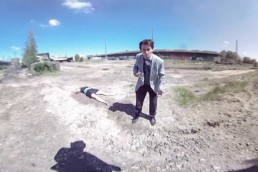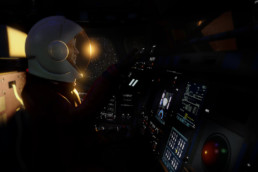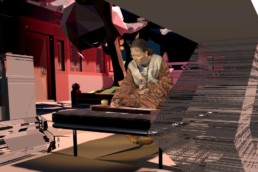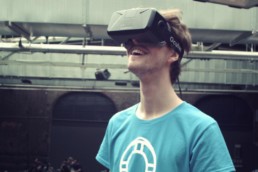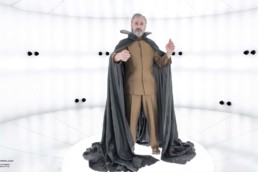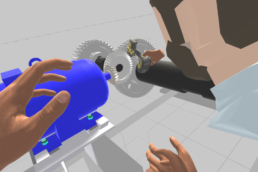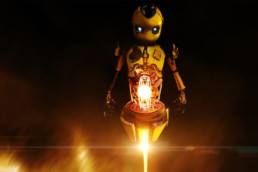Creative Studio
Immersive media
Potential of immersive media
Immersive media is currently playing an increasingly important role in the age of digitisation. It allows users to dive into an artificially created environment through modern technologies, such as virtual reality and augmented reality. While VR creates a completely unique reality where users move about and and interact, AR expands existing reality. It can be used to place additional content in your field of view or on smartphone displays, for example. So AR is also the right option if you want to do something in the real world as well. And if you want to have a completely immersive experience, then VR is recommended. With VR you can depict different situations and objects and even create completely new worlds. As in the early days of computer technology, immersive media games are now pioneering the possibilities. Thanks to the VR game industry, incredible progress has been made in e-learning, simulation and gamification. Virtual Escape Rooms for building teamwork, communications and creativity are only one of a large number of applications.
Potential of VR games
An obvious strength of VR/AR lies in interaction and the associated possibilities to let the user explore a world on their own. The design of websites and computer games can serve as orientation here.
The most important point is to design the application so that it is as intuitive as possible. The best immersion is achieved when the user no longer has to worry about how they are moving in the virtual world, but can simply enjoy the experience. The user can calmly orientate themselves in reality and the world they already know and be inspired by it.
The appeal of computer games is unbroken and is visually and interactively enhanced by VR/AR.
How to develop a VR game?
Prototyping
Once you have the concept in hand and have opted for a production process, it often makes sense to create and test different prototypes. Of course, this only makes sense if you consider your own concept a “work in progress” and are willing to continue to work on the concept and reject your own ideas. Prototypes help to avoid mistakes and avoid later cost traps especially for interactive projects.
Prototypes can be created as a simple paper version or as a digital version depending on the project. Prototypes don’t have to look good, they just need to show whether the user will be able to find their way around the experience. Prototypes show if interaction concepts are understandable and will be well received later.
In a larger project that later involves the development of many visual graphics, it often makes sense to have a working prototype with placeholders and simple graphics.
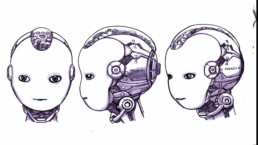
Layout from Huxley
Player-type analysis
Different users have different wishes and preferences. When planning a VR Experience for a larger group of users, it may be helpful to include different mechanisms that target different preferences. The best-known model here is the Bartle test from the world of online role-playing games. There are four different types of players according to the Bartle test:
Achiever – The achiever wants to achieve as much as possible in the game.
Explorer – The explorer tries to discover or explore as much as possible.
Socialiser – The socialiser strives for contacts and interaction with other players.
Killer – The killer seeks competition and conflict with other players.
The achiever and explorer are more interested in the game world, while socialisers and killers are more interested in interacting with other players. Not all VR experiences need to consider whether they offer enough appeal for each of these types. However, it doesn’t hurt to check your concept in terms of these four preferences.
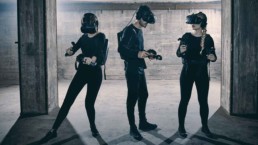
Concept art / Pre-visualisation
In contrast to the prototype, pre-visualisation and concept art are about the visual experience. The individual functions of the application are left in the background while the future visual style is focused on. This is particularly important the more partners and producers are involved in the project. Text descriptions always leave plenty of room for your own fantasies, while elaborate drawings and visualisations make everyone involved decide on a style. So there are fewer unintentional surprises later.
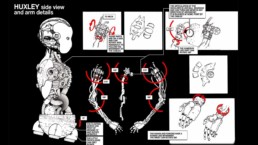
Movement of the arm - Huxley

Final version of Huxley
VR means an experience
Virtual reality is not something you look at – it’s like a journey into another world. And like a journey, a VR Experience can open your eyes and broaden your horizons. So you should always wonder if the place you are creating or mapping is worth the trip. It should have enough suspense, captivate and lead to new insights.


